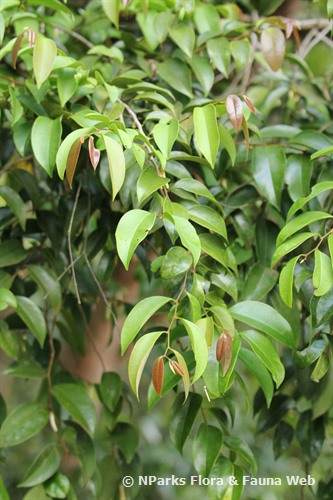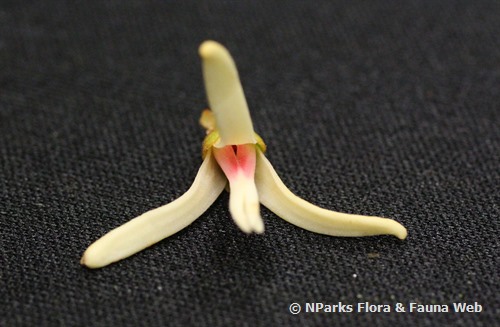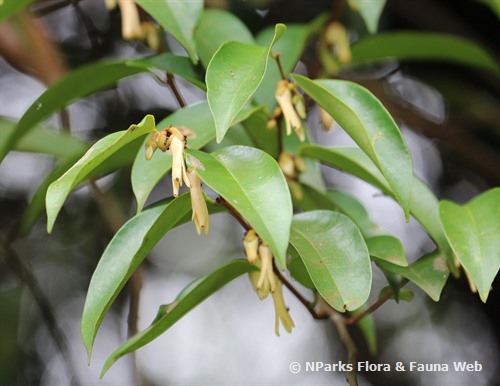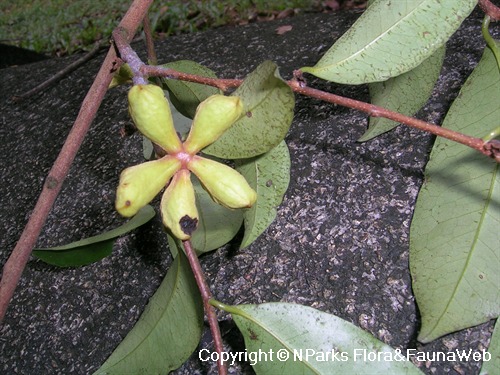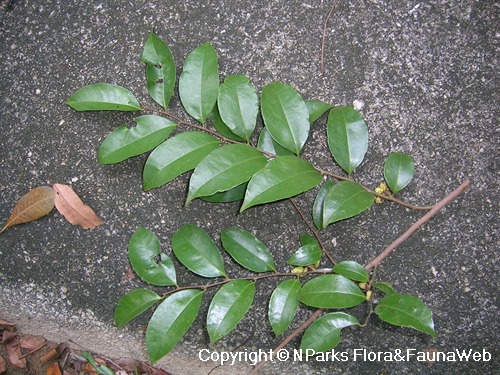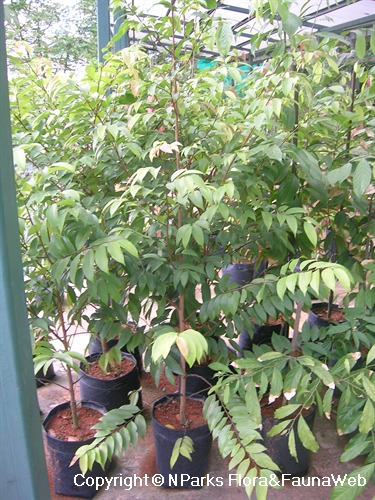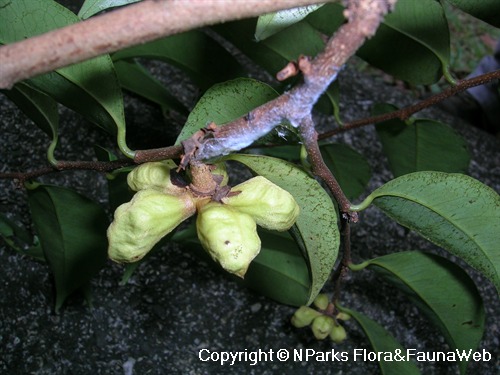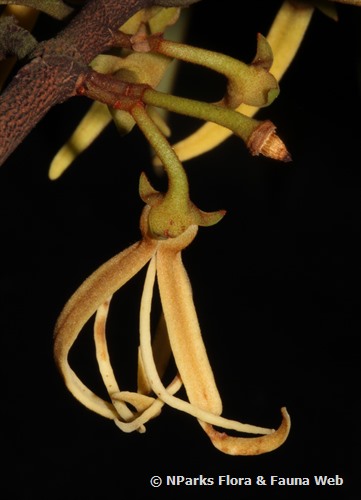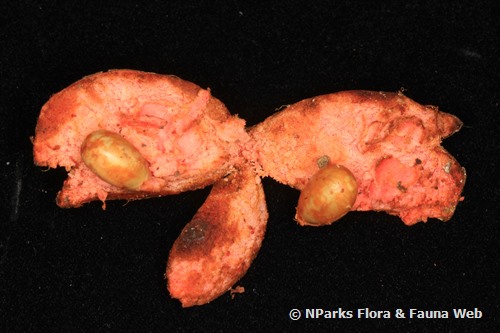
Back
Xylopia malayana Hook.f. & Thomson
| Family Name: | Annonaceae |
| Synonyms: | Xylopia dicarpa Hook.f. & Thomson |
| Common Name: | Kayu Tapis, Krai, Kayu Belinchi, Banik Kijang, Jangkang |
Name
Classifications and Characteristics
| Plant Division | Angiosperms (Flowering Seed Plants) (Dicotyledon) |
|---|---|
| Plant Growth Form | Tree (Big (>30m)) |
| Lifespan (in Singapore) | Perennial |
| Mode of Nutrition | Autotrophic |
| Plant Shape | Irregular |
| Maximum Height | 39 m |
Biogeography
| Native Distribution | Sumatra, Peninsular Malaysia, Singapore, and Borneo |
|---|---|
| Native Habitat | Terrestrial (Primary Rainforest, Freshwater Swamp Forest) |
| Preferred Climate Zone | Tropical |
| Local Conservation Status | Native to Singapore (Vulnerable (VU)) |
Description and Ethnobotany
| Growth Form | It is a tree up to 39 m tall 1.8 m trunk girth with short buttresses and greyish-white bark. |
|---|---|
| Foliage | Its alternate, stalked leaves have thinly leathery leaf blades that are egg-shaped or elliptic, and 8.8–12.5 by 3.8–5 cm, with 8 pairs of veins. |
| Flowers | Its solitary, axillary flowers are fragrant, and up to 2.4 cm long. Its sepals are broad, egg-shaped, and 3.8 mm long. Its petals are leathery, pale yellow, and covered with fine hair. |
| Fruit | Each flower produces an aggregate fruit consisting of fruitlets attached to the tip of the flower stalk. The fruitlets are about 27 mm long, red, fleshy with red pulp, and splitting open when ripe. Each fruitlet contains up to 6 seeds. |
| Habitat | It grows in sparse forest. |
| Associated Fauna | Its flowers are insect-pollinated. |
| Cultivation | It can be propagated by seed. |
| Etymology | Greek Xylopia, bitter-wood; Latin malayana, from Malaya (Peninsular Malaysia), referring to one locality in the natural distribution of this plant |
| Ethnobotanical Uses | Timber & Products: Its wood is used for house-building. |
Landscaping Features
| Landscaping | It is suitable for parks. |
|---|---|
| Desirable Plant Features | Fragrant (Flowers) |
| Landscape Uses | Parks & Gardens |
Fauna, Pollination and Dispersal
| Pollination Method(s) | Biotic (Fauna) |
|---|---|
| Seed or Spore Dispersal | Biotic (Fauna) |
Plant Care and Propagation
| Light Preference | Full Sun |
|---|---|
| Water Preference | Moderate Water |
| Plant Growth Rate | Moderate |
| Rootzone Tolerance | Moist Soils, Well-Drained Soils, Fertile Loamy Soils |
| Propagation Method | Seed |
Foliar
| Foliage Retention | Evergreen |
|---|---|
| Mature Foliage Colour(s) | Green |
| Mature Foliage Texture(s) | Leathery, Thin |
| Foliar Type | Simple / Unifoliate |
| Foliar Arrangement Along Stem | Alternate |
| Foliar Attachment to Stem | Petiolate |
| Foliar Shape(s) | Non-Palm Foliage (Ovate, Elliptical) |
| Foliar Venation | Pinnate / Net |
| Foliar Margin | Entire |
| Leaf Area Index (LAI) for Green Plot Ratio | 3.0 (Tree - Intermediate Canopy) |
Floral (Angiosperm)
| Flower & Plant Sexuality | Bisexual Flowers |
| Flower Colour(s) | White, Yellow / Golden, Cream / Off-White |
|---|---|
| Flower Grouping | Solitary |
| Flower Location | Axillary |
Fruit, Seed and Spore
| Mature Fruit Colour(s) | Red |
|---|---|
| Fruit Classification | Aggregate Fruit (Syncarp) |
| Fruit Type | Fleshy Fruit , Non-Accessory Fruit |
Image Repository
Others
| Master ID | 1910 |
|---|---|
| Species ID | 3203 |
| Flora Disclaimer | The information in this website has been compiled from reliable sources, such as reference works on medicinal plants. It is not a substitute for medical advice or treatment and NParks does not purport to provide any medical advice. Readers should always consult his/her physician before using or consuming a plant for medicinal purposes. |


